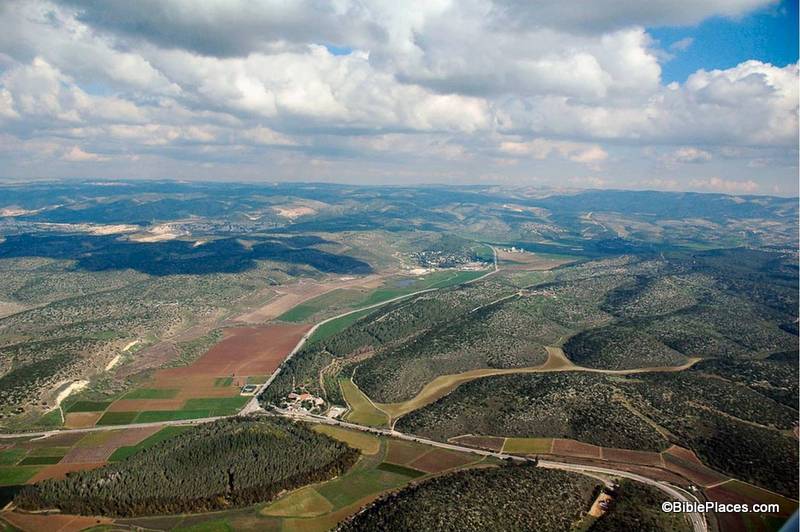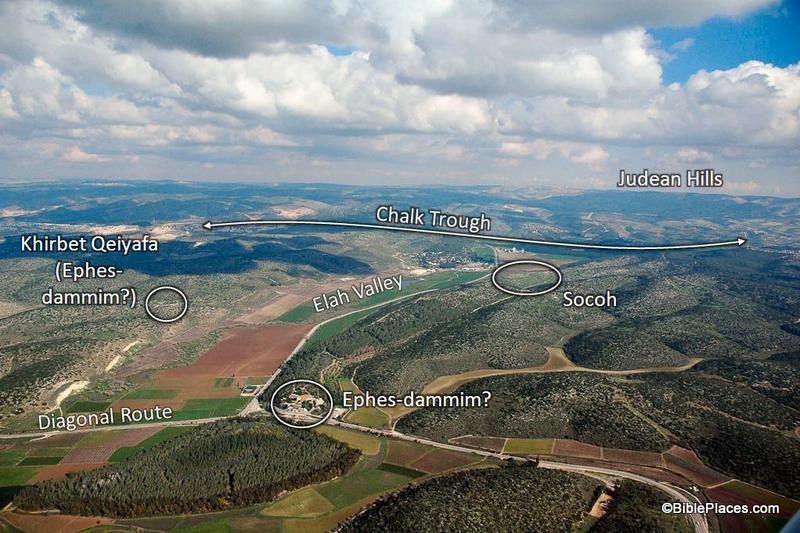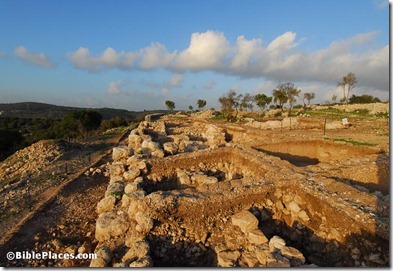Two Neolithic figurines were discovered at Moza (biblical Emmaus?) along the Jerusalem-Tel Aviv highway. High-res photos from the IAA are available. Two men were arrested for trying to steal bones from excavations in Beth Shemesh. The Israeli government has appealed the verdict in the case of the Jehoash Inscription, but the rationale for doing so is unclear. Shmuel Browns suggests a 10-day itinerary that will take you to many places you won’t see on a typical Christian tour. Stephen Gabriel Rosenberg provides a review of the archaeological stories in July. Aaron’s tomb near Petra is a “quiet, austere holy site.” There is a lot to see in the Kidron Valley of Jerusalem. Accordance 10 has some nice new features for photographs and maps. Now shipping: Alexander to Constantine: Archaeology of the Land of the Bible, by Eric M. Meyers and Mark A. Chancey. HT: Charles Savelle  Neolithic figurine from Moza. Photo by Yael Yolovitch, courtesy of the Israel Antiquities Authority.
Neolithic figurine from Moza. Photo by Yael Yolovitch, courtesy of the Israel Antiquities Authority.
With the discovery of a LMLK seal at Azekah, Omer Sergi of Tel Aviv University gave an impromptu lecture about LMLK seals. Daily updates by volunteers are posted here.
“Archaeological sites that currently take years to map will be completed in minutes if tests underway in Peru of a new system being developed at Vanderbilt University go well.”
Egyptian officials are trying to bring back tourists by opening new tombs, including the tomb of Meresankh.
An Israeli journalist has filmed a mass grave near the Golden Gate that he suggests dates to the Roman destruction of Jerusalem.
Like the tower of Pisa, the Colosseum of Rome is leaning.
James Mellaart, excavator of Çatalhüyük, passed away this week.
More than a hundred people gathered at the tomb of Sir Flinders Petrie this week to celebrate the 70th anniversary of his death.
The latest in the wider world of archaeology is reviewed by the ASOR Blog.
Congratulations to Geoff C. and Frank P., winners of Walking in the Dust of Rabbi Jesus.
HT: Jack Sasson, Wayne Stiles, Joseph Lauer
- Tagged Discoveries, Excavations, Giveaway, Italy, Jerusalem, Shephelah, Turkey, Weekend Roundup
(Post by Seth M. Rodriquez)
This week’s photo comes from Volume 4 of the revised and expanded edition of the Pictorial Library of Bible Lands and is entitled “Elah Valley Aerial from West” (photo ID #: tb011606772). One of the improvements in the new edition of the collection is the addition of some aerial photos of the Elah Valley which make it easy to pick out the valley from among the hills of the Shephelah. In the photo above, the valley can be seen starting at the bottom left corner, moving diagonally up to the center. (Click on the photo for a higher resolution.)
This photo is extremely useful when discussing the encounter of David and Goliath. First Samuel 17 sets the stage in the following way:
Now the Philistines gathered their armies for battle. And they were gathered at Socoh, which belongs to Judah, and encamped between Socoh and Azekah, in Ephes-dammim. And Saul and the men of Israel were gathered, and encamped in the Valley of Elah, and drew up in line of battle against the Philistines. And the Philistines stood on the mountain on the one side, and Israel stood on the mountain on the other side, with a valley between them. (1 Sam. 17:1-3, ESV.)
Most of the locations in this passage are visible in this picture. To assist in identifying them, I’m going to pull from one of the PowerPoint presentations included in the Pictorial Library collection:
In this slide the location of the Elah Valley and Socoh are clearly marked, along with possible locations of Ephes-dammim. Azekah is not pictured here, but is located just off the photo to the left. You can easily imagine the Philistine army on one side of the valley and the Israelites on the other, just as it is described in verse 3.
In the background, the Judean Hills are marked which adds to the value of this photo. When teaching on David and Goliath, I like to point out to my listeners that there was much at stake for David in this battle. Not only were the Israelite soldiers facing a deadly enemy and not only was the reputation of Israel’s God on the line, but there was another element that we tend not to think about which relates to geography. If you look at a map of this area you will see that the Elah Valley is an entryway into the Hill Country of Judah, the region where David and his family lived. Three thousand years after the fact we have the advantage of knowing how it turned out, but if David had lost the battle it is possible that the Philistines would have penetrated into the Judean Hills (as they had when they were encamped at Michmash on the Central Benjamin Plateau). This would have put David’s family and neighbors at serious risk. So as David faced Goliath, he was not only fighting for his people and his God … he also was fighting for the safety of his own hometown.
This photo is included in Volume 4 of the Pictorial Library of Bible Lands and can be purchased here.
- Tagged Picture of the Week, Shephelah
Some scholars are suggesting that the depiction on a seal found in the Sorek Valley shows the biblical hero Samson subduing a lion. From Haaretz:
A small stone seal found recently in the excavations of Tel Beit Shemesh could be the first archaeological evidence of the story of the biblical Samson.
The seal, measuring 1.5 centimeters, depicts a large animal next to a human figure. The seal was found in a level of excavation that dates to the 11th century B.C.E. That was prior to the establishment of the Judean kingdom and is considered to be the period of the biblical judges – including Samson. Scholars say the scene shown on the artifact recalls the story in Judges of Samson fighting a lion.
But excavation directors Prof. Shlomo Bunimovitz and Dr. Zvi Lederman of Tel Aviv University say they do not suggest that the human figure on the seal is the biblical Samson. Rather, the geographical proximity to the area where Samson lived, and the time period of the seal, show that a story was being told at the time of a hero who fought a lion, and that the story eventually found its way into the biblical text and onto the seal.
The story continues and explains some of the geographical connections. This discovery reminds me that while Samson’s life largely centers in the Sorek Valley, the most prominent city of that valley is never mentioned in the narrative (Judges 13-16). If the interpretation of this seal is correct, the people of Beth Shemesh remembered their local hero with some pride.
A high-resolution photo of the seal by Raz Lederman is available here.
HT: Joseph Lauer
- Tagged Discoveries, Shephelah
Archaeologists at Hazor have discovered 14 large storejars full of grain burned in a massive conflagration during the period of the judges (c. 1300 BC). Volunteer Rob Heaton shares his experiences in the last days of the dig and more.
The 2012 Lautenschläger Azekah Archaeological Expeditions Blog is being updated daily. Yesterday they confirmed the discovery of ancient fortifications.
Matti Friedman describes a day of digging at the Philistine city of Gath.
The Israel Antiquities Authority’s Archaeological-Educational Center invites the public to
“Archaeologists for a Day” program at Adullam Park in the Shephelah on Monday, July 30. The cost is 20 NIS and pre-registration is required at [email protected], Tel: 02-9921136, Fax: 02-9925056. The invitation (Word doc in Hebrew) provides more details.
Seth Rodriquez has identified the most interesting photos for a Bible teacher from NASA’s Visible Earth website.
High-tech aerial photos remove the ground cover so you can see what lies below.
In a new article at The Bible and Interpretation, Yosef Garfinkel reviews some attacks on his work at Khirbet Qeiyafa and provides “an unsensational archaeological and historical interpretation” in which he provides 14 “facts,” concluding that “the site marks the beginning of a new era: the establishment of the biblical Kingdom of Judah.” That last word is problematic.
At Christianity Today, Gordon Govier interviews evangelical scholars about the potential impact of the discoveries at Khirbet Qeiyafa.
A 19th-century map of Jerusalem has been discovered in an archive in Berlin.
The story about Islamic clerics wanting to destroy the Egyptian pyramids is not true.
HT: Roi Brit, Joseph Lauer, Jack Sasson
- Tagged Egypt, Excavations, Galilee, Jerusalem, Shephelah, Weekend Roundup
Luke Chandler is volunteering at the excavations on the northern side of the Elah Valley and he briefly notes a few items of interest:
- An early Iron Age inscription has been discovered.
- This may be the final season of excavating Khirbet Qeiyafa.
- The excavators have identified the next site they wish to excavate.
- Chandler has also has posted a series of photos from the first week of the dig.
Don’t miss his great photo of a sling stone!
(photo source)
- Tagged Discoveries, Excavations, Shephelah
The BiblePlaces Blog provides updates and analysis of the latest in biblical archaeology, history, and geography. Unless otherwise noted, the posts are written by Todd Bolen, PhD, Professor of Biblical Studies at The Master’s University.
As an Amazon Associate we earn from qualifying purchases. In any case, we will provide honest advice.


